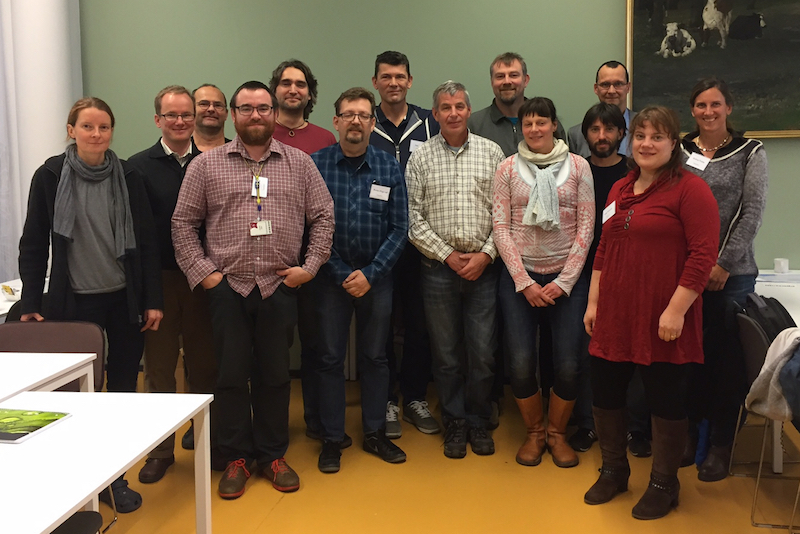Enhancing eInfrastructures for wild animal research
A Biotelemetry Sensor Data Workshop was held in Uppsala in November 2015 as part of the effort to enhance Nordic collaboration on how to handle data from sensors mounted on wild animals.
Keeping track of animals
Research on animal behaviour and physiology under changing environmental conditions has become an important part of modern ecological research. A cornerstone in this context is information about e.g., the physiology, movement and body condition of wild animals at different times and in different environments. This information is gathered by biotelemetry sensors mounted on the animals, which send information about the different aspects by cell phone or satellite link in close to real-time to researchers.
Recent technical advances in animal-based biotelemetry sensors have enabled remote data capture from a steadily increasing number of taxa, species and individual animals, resulting in enormous amounts of data. The fact that researchers in many cases still lack the appropriate tools to efficiently collect, manage and share these datasets is a crucial limitation for efficient use of these data.

“Ecologists are often unaware of the great progress being made in information and data technologies, which could greatly facilitate and enhance their work. I hope that we can come together at a Nordic level to collectively increase our competence with these technologies, and improve our work in general.” These words came from Bram van Moorter, Norwegian Institute for Nature Research, and pinpoint why NeIC and the Umeå Center for Wireless Remote Animal Monitoring (UC-WRAM) at the Swedish University of Agricultural Sciences (SLU) hosted a workshop in Uppsala, Sweden on 3-4 November 2015. The workshop brought together scientists and eInfrastructure providers to present the current state in managing biotelemetry sensor data and to identify joint activities for enhancing the eInfrastructures.
Three areas for collaboration
The workshop featured seven presentations on existing services for storing and analysing telemetry data. Among the services were WRAM (Wireless Remote Animal Monitoring, Sweden), dyreposisjoner (Norway), SAM (Spatial database for Animal Movement, Norway), Eurodeer (international collaboration focusing on roedeer), Movebank (U.S.-German collaboration), and Swedish LifeWatch Analysis Portal.
Scientists from Finland, Sweden and Norway presented their methods for capturing, transferring, storing, and analysing data. Each presenter highlighted key tasks and questions for future needs, collaboration, and development and discussed ideas for advancing eInfrastructures, services and their use.
The workshop identified the following three areas for collaboration:
- developing or deploying services for annotating tracking data with environmental parameters,
- exchanging knowledge on tools and best practices for handling biotelemetry sensor data, and
- organising common training workshops on the use of services and eInfrastructures for different stages of the sensor data life cycle.
These areas will be followed up by the participants to propose specific actions for collaboration between NeIC, the national eInfrastructure providers, the Nordic biotelemetry community, and external partners.
More cross-border collaboration needed
Dr. Holger Dettki, Assoc. Prof., Head of Umeå Center for Wireless Remote Animal Monitoring stated:
“Today, climate change and changes to the environment, together with human impact, affect ecosystems on a global scale. To answer these global challenges, the Nordic biotelemetry community needs to collaborate even more across national and disciplinary borders. Hence, it is of the utmost importance for the Nordic biotelemetry research community to make as much use as possible of the already existing common eInfrastructures and services for data sharing and collaboration, as well as to develop new, common analysis tools available to all researchers. Only if we as researchers are familiar with the existing tools and services, can we efficiently manage our data and collaborate. We researchers must put our efforts into research and not into reinventing similar research tools for every project in every Nordic country.”
